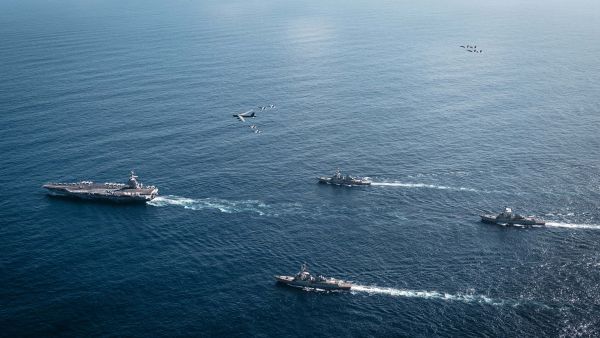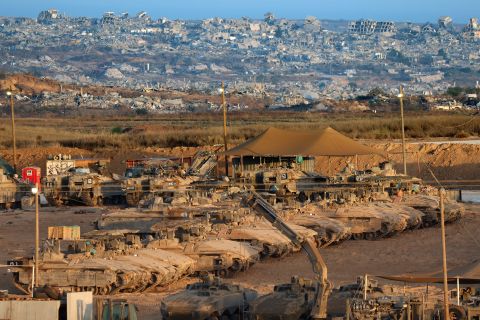ALBAWABA - Off the coast of Venezuela, the US has gathered one of its biggest military forces in recent memory, suggesting that President Donald Trump's administration may be getting ready to expand its Caribbean operations.
The Washington Post claims that the escalation is a result of growing hostility toward Venezuelan President Nicolás Maduro's administration.
A substantial array of naval assets, including almost a dozen warships, a special operations vessel, and a nuclear-powered attack submarine, are currently part of the U.S. presence in the area. Next week, the USS Gerald R. Ford, an aircraft carrier, is scheduled to join the force along with over 4,000 personnel and other warships.
Trump stated in an interview on Friday that Washington is not currently considering direct strikes inside Venezuela, despite his repeated emphasis on his intention to increase pressure on Maduro. Additionally, he implied that no option is completely off the table by leaving open the possibility of later operations expansion. The size of the deployment is significantly larger than what is normally needed for anti-narcotics operations, according to satellite imagery, suggesting that the Pentagon may be preparing for more extensive action.
A vast range of air and naval capabilities are part of the buildup. With the help of long-range bombers, maritime patrol aircraft, cutting-edge F-35 fighter jets, Osprey multi-role aircraft, and MQ-9 Reaper drones, the United States has carriers, destroyers, cruisers, and amphibious assault ships in the area. Many helicopters have also been used, including the heavy AC-130G gunship, MH-60s, MH-6 Little Birds, and Black Hawks. According to satellite photos, F-35 fighters are based in Puerto Rico, while other aircraft and equipment have been transferred to US bases in Ecuador and El Salvador.
Analysts have speculated that the U.S. may be getting ready for a significant change in its stance toward Venezuela as a result of the arrival of such a potent carrier strike group. There is fierce competition for aircraft carrier deployments, according to experts, and the USS Gerald R. Ford's assignment to the Caribbean is probably a turning point in internal U.S. decision-making.
In Washington, political responses are starting to emerge. The administration has come under fire from Democratic lawmakers for not offering a convincing legal defense for any possible military action. The United Nations High Commissioner for Human Rights issued a warning, stating that if no immediate threat is proven, a U.S. strike on Venezuela might be considered an extrajudicial killing and violate international law.
Even as international anxiety mounts over the potential for an escalation that could destabilize the region, the Trump administration's increased readiness is demonstrated by the swift concentration of US forces off Venezuela.
The existence of an aircraft carrier, nuclear submarines, bombers, and sophisticated fighter jets shows that military intervention is still a viable option being considered, despite Trump's insistence that the US is not actively planning direct attacks. International pressure to keep a careful eye on the situation's development has increased as a result.










